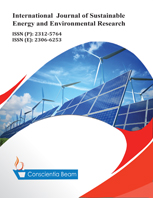Schematic Modelling of Sustainable Solid Waste Management in Nigeria
DOI:
https://doi.org/10.18488/journal.13.2020.92.98.109Abstract
Waste management has been a major challenge in Nigeria. Waste generation has consistently expanded both in volume and complexity. Literature has shown that Nigeria generates about 25-45million tonnes of waste per annum, most of which are not recycled. The waste management structure largely in operation is a linear system of waste generation, collection/transportation and disposal. Waste management in Nigeria is faced with several challenges including feasible waste management structure. Sadly enough, the ill management of solid waste in the country has impacted on the environment and on human health. It is on this note that the authors decided to review the solid waste structure in Nigeria, with a view to proffering a schematic structure for the actualization of integrated solid waste management in Nigeria. Integrated solid waste management refers to the strategic approach to sustainable management of solid wastes covering all sources and all aspects, covering generation, segregation, transfer, sorting, treatment, recovery and disposal in an integrated manner, with an emphasis on maximizing resource use efficiency. In other words, the proposed structure will encourage the use of waste as a resource, thereby reducing potential health, social and economic impact of ill management. It is recommended that in addition to the implementation of ISWM, integration of the informal waste management sector should be considered.

